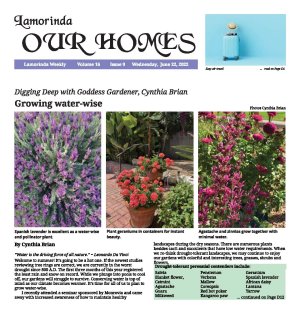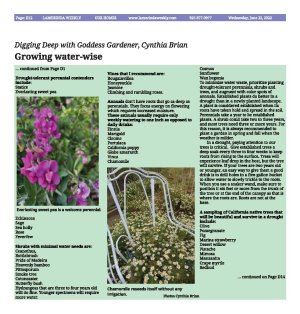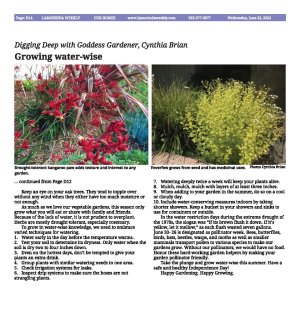|
|
Published June 22nd, 2022
|
Digging Deep with Goddess Gardener, Cynthia Brian
|
| Growing water-wise |
| By Cynthia Brian |
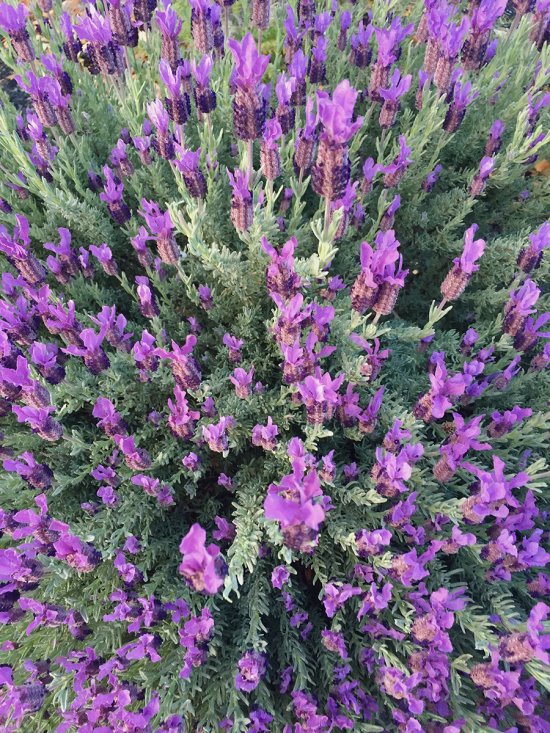 |
| Spanish lavender is excellent as a water-wise and pollinator plant. Photos Cynthia Brian |
By Cynthia Brian

 "Water is the driving force of all nature." ~ Leonardo Da Vinci
"Water is the driving force of all nature." ~ Leonardo Da Vinci
 Welcome to summer! It's going to be a hot one. If the newest studies reviewing tree rings are correct, we are currently in the worst drought since 800 A.D. The first three months of this year registered the least rain and snow on record. While we plunge into pools to cool off, our gardens will struggle to survive. Conserving water is top of mind as our climate becomes warmer. It's time for all of us to plan to grow water-wise.
Welcome to summer! It's going to be a hot one. If the newest studies reviewing tree rings are correct, we are currently in the worst drought since 800 A.D. The first three months of this year registered the least rain and snow on record. While we plunge into pools to cool off, our gardens will struggle to survive. Conserving water is top of mind as our climate becomes warmer. It's time for all of us to plan to grow water-wise.
 I recently attended a seminar sponsored by Monrovia and came away with increased awareness of how to maintain healthy landscapes during the dry seasons. There are numerous plants besides cacti and succulents that have low water requirements. When we re-think drought-tolerant landscapes, we may continue to enjoy our gardens with colorful and interesting trees, grasses, shrubs and flowers.
I recently attended a seminar sponsored by Monrovia and came away with increased awareness of how to maintain healthy landscapes during the dry seasons. There are numerous plants besides cacti and succulents that have low water requirements. When we re-think drought-tolerant landscapes, we may continue to enjoy our gardens with colorful and interesting trees, grasses, shrubs and flowers.
 Drought-tolerant perennial contenders include:
Drought-tolerant perennial contenders include:
 Salvia
Salvia
 Blanket flower,
Blanket flower,
 Catmint
Catmint
 Agastache
Agastache
 Guara
Guara
 Milkweed
Milkweed
 Penstemon
Penstemon
 Verbena
Verbena
 Mallow
Mallow
 Coreopsis
Coreopsis
 Red hot poker
Red hot poker
 Kangaroo paw
Kangaroo paw
 Geranium
Geranium
 Spanish lavender
Spanish lavender
 African daisy
African daisy
 Lantana
Lantana
 Yarrow
Yarrow
 Drought-tolerant perennial contenders include:
Drought-tolerant perennial contenders include:
 Statice
Statice
 Everlasting sweet pea
Everlasting sweet pea
 Echinacea
Echinacea
 Sage
Sage
 Sea holly
Sea holly
 Rose
Rose
 Feverfew
Feverfew

 Shrubs with minimal water needs are:
Shrubs with minimal water needs are:
 Ceanothus,
Ceanothus,
 Bottlebrush
Bottlebrush
 Pride of Madeira
Pride of Madeira
 Heavenly bamboo
Heavenly bamboo
 Pittosporum
Pittosporum
 Smoke tree
Smoke tree
 Cotoneaster
Cotoneaster
 Butterfly bush
Butterfly bush
 Hydrangeas that are three to four years old will do fine. Younger specimens will require more water.
Hydrangeas that are three to four years old will do fine. Younger specimens will require more water.

 Vines that I recommend are:
Vines that I recommend are:
 Bougainvillea
Bougainvillea
 Honeysuckle
Honeysuckle
 Jasmine
Jasmine
 Climbing and rambling roses.
Climbing and rambling roses.

 Annuals don't have roots that go as deep as perennials. They focus energy on flowering which requires increased moisture.
Annuals don't have roots that go as deep as perennials. They focus energy on flowering which requires increased moisture.
 These annuals usually require only weekly watering to one inch as opposed to daily drinks:
These annuals usually require only weekly watering to one inch as opposed to daily drinks:
 Zinnia
Zinnia
 Marigold
Marigold
 Cleome
Cleome
 Portulaca
Portulaca
 California poppy
California poppy
 Globe amaranth
Globe amaranth
 Vinca
Vinca
 Chamomile
Chamomile
 Cosmos
Cosmos
 Sunflower
Sunflower
 Wax begonia
Wax begonia
 To minimize water waste, prioritize planting drought-tolerant perennials, shrubs and trees, and augment with color spots of annuals. Established plants do better in a drought than in a newly planted landscape. A plant is considered established when its roots have taken hold and spread in the soil. Perennials take a year to be established plants. A shrub could take two to three years, and most trees need three or more years. For this reason, it is always recommended to plant a garden in spring and fall when the weather is milder.
To minimize water waste, prioritize planting drought-tolerant perennials, shrubs and trees, and augment with color spots of annuals. Established plants do better in a drought than in a newly planted landscape. A plant is considered established when its roots have taken hold and spread in the soil. Perennials take a year to be established plants. A shrub could take two to three years, and most trees need three or more years. For this reason, it is always recommended to plant a garden in spring and fall when the weather is milder.
 In a drought, paying attention to our trees is critical. Give established trees a deep soak every three to four weeks to keep roots from rising to the surface. Trees will experience leaf drop in the heat, but the tree will survive. If your trees are two years old or younger, an easy way to give them a good drink is to drill holes in a five-gallon bucket to allow water to slowly trickle to the roots. When you use a soaker wand, make sure to position it six feet or more from the trunk of the tree or at the end of the canopy as that is where the roots are. Roots are not at the base.
In a drought, paying attention to our trees is critical. Give established trees a deep soak every three to four weeks to keep roots from rising to the surface. Trees will experience leaf drop in the heat, but the tree will survive. If your trees are two years old or younger, an easy way to give them a good drink is to drill holes in a five-gallon bucket to allow water to slowly trickle to the roots. When you use a soaker wand, make sure to position it six feet or more from the trunk of the tree or at the end of the canopy as that is where the roots are. Roots are not at the base.

 A sampling of California native trees that will be beautiful and survive in a drought include:
A sampling of California native trees that will be beautiful and survive in a drought include:
 Olive
Olive
 Pomegranate
Pomegranate
 Fig
Fig
 Marina strawberry
Marina strawberry
 Desert willow
Desert willow
 Pistache
Pistache
 Mimosa
Mimosa
 Manzanita
Manzanita
 Crape myrtle
Crape myrtle
 Redbud
Redbud

 Keep an eye on your oak trees. They tend to topple over without any wind when they either have too much moisture or not enough.
Keep an eye on your oak trees. They tend to topple over without any wind when they either have too much moisture or not enough.
 As much as we love our vegetable gardens, this season only grow what you will eat or share with family and friends. Because of the lack of water, it is not prudent to overplant. Herbs are mostly drought-tolerant, especially rosemary.
As much as we love our vegetable gardens, this season only grow what you will eat or share with family and friends. Because of the lack of water, it is not prudent to overplant. Herbs are mostly drought-tolerant, especially rosemary.
 To grow in water-wise knowledge, we need to embrace varied techniques for watering.
To grow in water-wise knowledge, we need to embrace varied techniques for watering.
 1. Water early in the day before the temperature warms.
1. Water early in the day before the temperature warms.
 2. Test your soil to determine its dryness. Only water when the soil is dry two to four inches down.
2. Test your soil to determine its dryness. Only water when the soil is dry two to four inches down.
 3. Even on the hottest days, don't be tempted to give your plants an extra drink.
3. Even on the hottest days, don't be tempted to give your plants an extra drink.
 4. Group plants with similar watering needs in one area.
4. Group plants with similar watering needs in one area.
 5. Check irrigation systems for leaks.
5. Check irrigation systems for leaks.
 6. Inspect drip systems to make sure the hoses are not strangling plants.
6. Inspect drip systems to make sure the hoses are not strangling plants.
 7. Watering deeply twice a week will keep your plants alive.
7. Watering deeply twice a week will keep your plants alive.
 8. Mulch, mulch, mulch with layers of at least three inches.
8. Mulch, mulch, mulch with layers of at least three inches.
 9. When adding to your garden in the summer, do so on a cool or cloudy day.
9. When adding to your garden in the summer, do so on a cool or cloudy day.
 10. Include water-conserving measures indoors by taking shorter showers. Keep a bucket in your showers and sinks to use for containers or outside.
10. Include water-conserving measures indoors by taking shorter showers. Keep a bucket in your showers and sinks to use for containers or outside.
 In the water restriction days during the extreme drought of the 1970s, the slogan was "If its brown flush it down. If it's yellow, let it mellow," as each flush wasted seven gallons.
In the water restriction days during the extreme drought of the 1970s, the slogan was "If its brown flush it down. If it's yellow, let it mellow," as each flush wasted seven gallons.
 June 20- 26 is designated as pollinator week. Bees, butterflies, birds, bats, beetles, wasps, and moths as well as smaller mammals transport pollen to various species to make our gardens grow. Without our pollinators, we would have no food. Honor these hard-working garden helpers by making your garden pollinator friendly.
June 20- 26 is designated as pollinator week. Bees, butterflies, birds, bats, beetles, wasps, and moths as well as smaller mammals transport pollen to various species to make our gardens grow. Without our pollinators, we would have no food. Honor these hard-working garden helpers by making your garden pollinator friendly.
 Take the plunge and grow water-wise this summer. Have a safe and healthy Independence Day!
Take the plunge and grow water-wise this summer. Have a safe and healthy Independence Day!
 Happy Gardening. Happy Growing.
Happy Gardening. Happy Growing. |
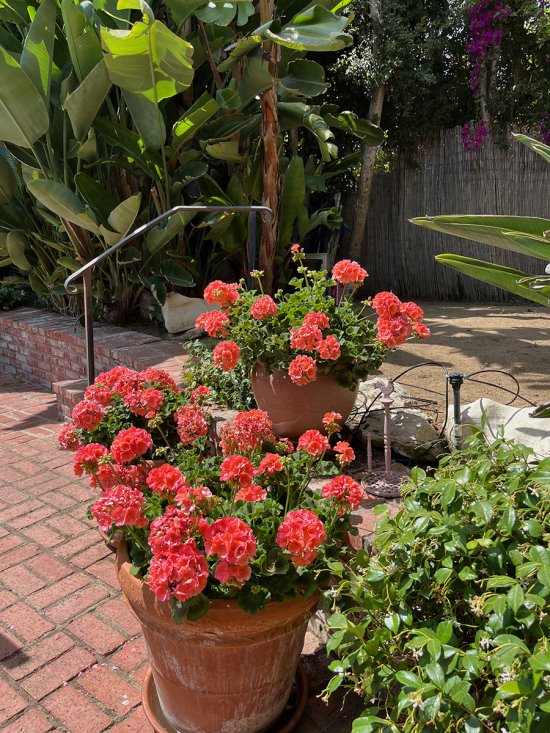 |
| Plant geraniums in containers for instant beauty. Photos Cynthia Brian |
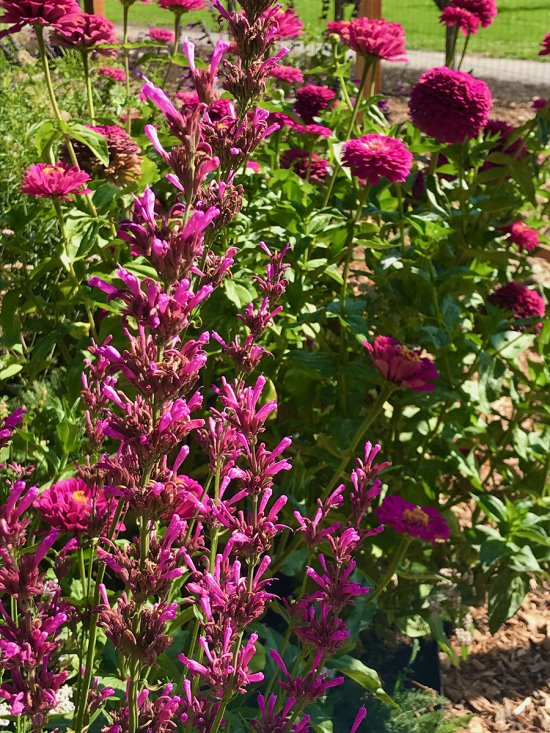 |
| Agastache and zinnias grow together with minimal water. Photos Cynthia Brian |
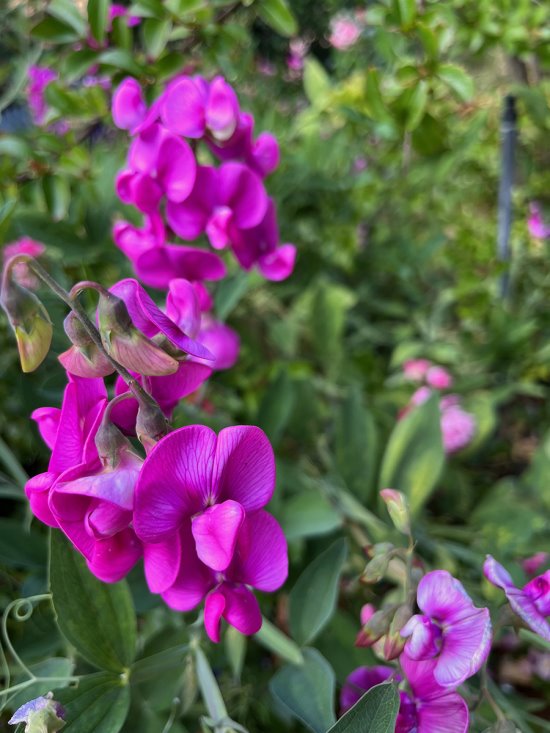 |
| Everlasting sweet pea is a welcome perennial. Photos Cynthia Brian |
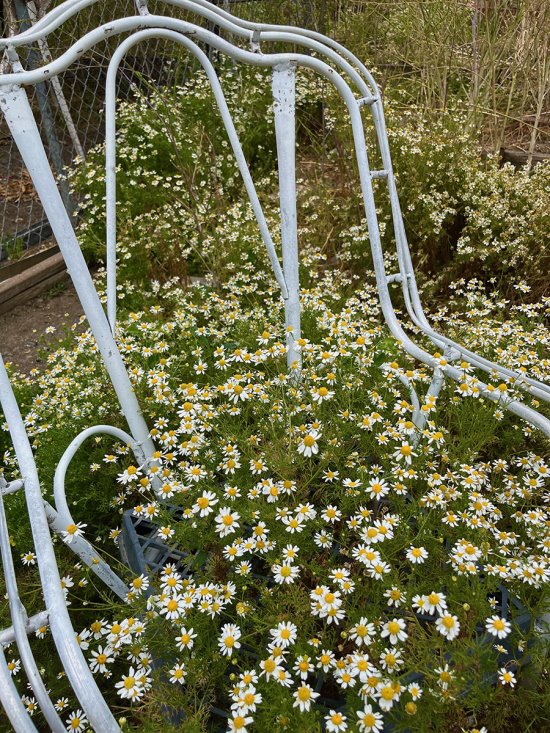 |
| Chamomile reseeds itself without any irrigation. Photos Cynthia Brian |
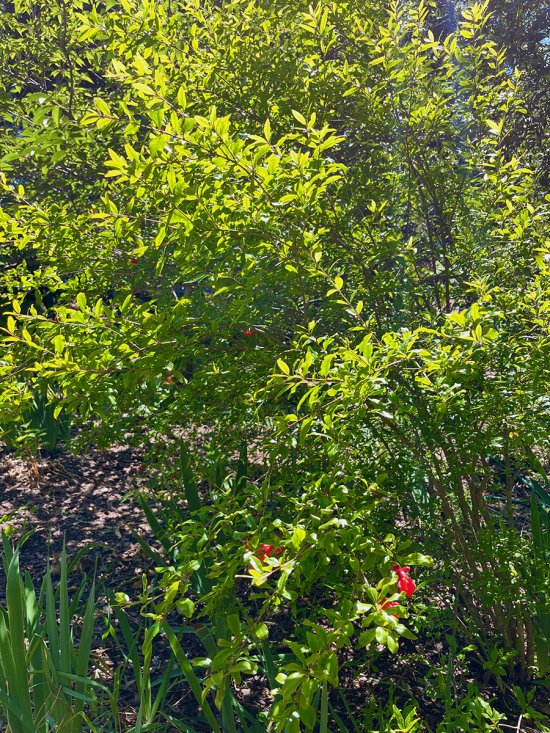 |
| Pomegranate trees have bright green leaves, orange flowers, and
red fruit. |
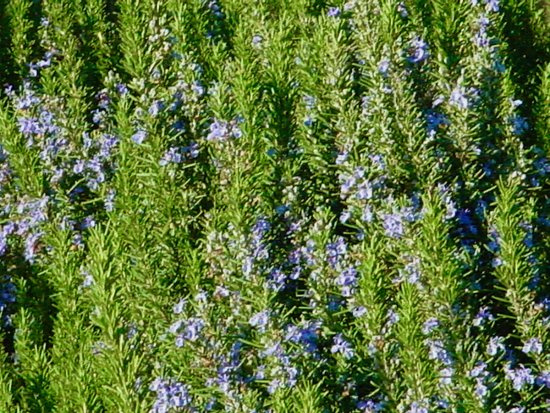 |
| Barbecue rosemary grows in dry conditions and attractors bees. |
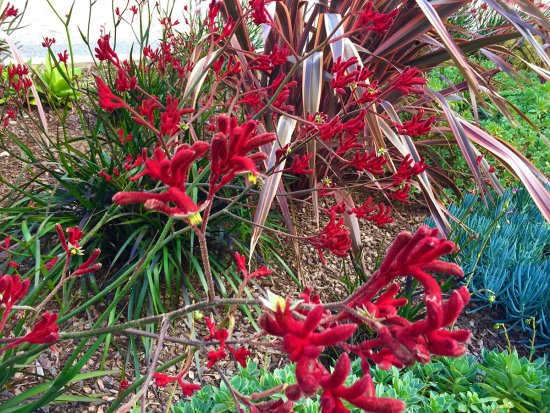 |
| Drought-tolerant kangaroo paw adds texture and interest to any
garden. |
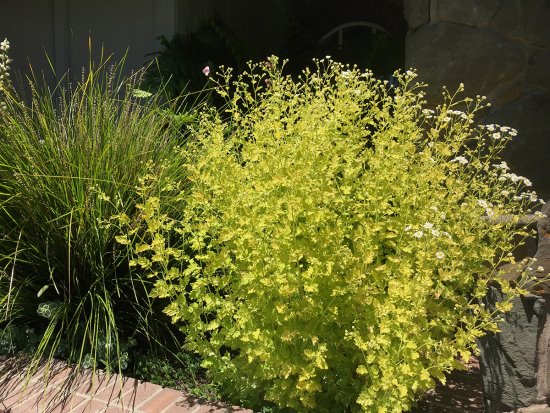 |
| Feverfew grows from seed and has medicinal uses. |
 |
| Butterfly-like flowers of guara. |
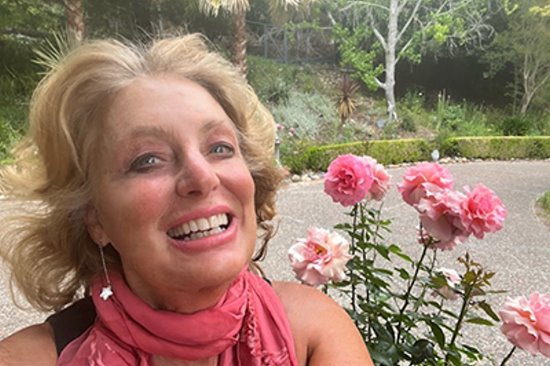 |
Cynthia Brian encourages growing roses.
Cynthia Brian, The Goddess Gardener, is available for hire to help you prepare for your summer garden. Raised in the vineyards of Napa County, Cynthia is a New York Times best-selling author, actor, radio personality, speaker, media and writing coach as well as the Founder and Executive Director of Be the Star You Are!r 501 c3. Tune into Cynthia's StarStyler Radio Broadcast at
www.StarStyleRadio.com. Buy copies of her books, including, Chicken Soup for the Gardener's Soul, Growing with the Goddess Gardener, and Be the Star You Are!
www.cynthiabrian.com/online-store. Receive a FREE inspirational music DVD and special savings. Hire Cynthia for writing projects, garden consults, and inspirational lectures.
Cynthia@GoddessGardener.com
www.GoddessGardener.com |
|
|
|













